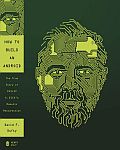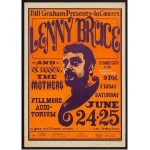Think science fiction is a genre relegated to the corners of bookstores or libraries? You’re overlooking a key detail. Geeks love science fiction. And we’ve learned over the last 50 years, some of our most significant technological developments come from geeks. Computer hardware and software are just the tip of the iceberg.
Still, there are things even the geeks haven’t achieved, such as interplanetary human travel or androids. With the latter, though, it isn’t for lack of trying. Robots are prevalent in modern industry. We just haven’t reached the level to combine hardware and software to the extent they rise to the level of a science fictional android — a human looking robot with a level of artificial intelligence that allows it to interact with humans in innumerable situations.
 So no one should probably be surprised when one of the most human looking and intelligent androids was named for a science fiction writer, Philip K. Dick. At least in popular culture, Dick is associated with androids, most notably the film Blade Runner, based on Dick’s novel Do Androids Dream of Electric Sheep? But Dick’s works didn’t just see androids as plot devices. Rather, he saw them as raising deeper questions. What does it mean to be human? What is reality?
So no one should probably be surprised when one of the most human looking and intelligent androids was named for a science fiction writer, Philip K. Dick. At least in popular culture, Dick is associated with androids, most notably the film Blade Runner, based on Dick’s novel Do Androids Dream of Electric Sheep? But Dick’s works didn’t just see androids as plot devices. Rather, he saw them as raising deeper questions. What does it mean to be human? What is reality?
David F. Dufty uses Dick’s ideas and stories to provide greater perspective in How to Build an Android: The True Story of Philip K. Dick’s Robotic Resurrection, the story of the development — and inadvertent loss — of an android modeled on Philip K. Dick. The effort was headed by Dallas-based sculptor/roboticist David Hanson and programmer Andrew Olney and others at the Institute for Intelligent Systems at the University of Massachusetts. The obstacles were numerous, especially considering the plan was to model the android after Dick. Although Dufty begins the book with the loss of the android’s head on a plane flight from Dallas to San Francisco, the bulk of the book looks at the obstacles and the efforts to overcome them.
From a hardware standpoint, robotic reproductions of human features and facial expressions were relatively crude. Although Hanson developed a product he called Frubber, which had a skin-like appearance, there is an immense range of human facial expressions. Trying to reproduce those realistically is a struggle in and of itself. On the software end, although the Institute for Intelligent Systems had made leaps in its efforts to create an interactive computerized teacher, even that focused on one subject area. An android, however, needs to be able to engage in a wide range of dialogue, some of which might be entirely unexpected. To address that in part, Olney programmed in various interviews with and writings by Dick. Yet both that and Hanson’s design of the head raises yet another issue — copyright. Hanson met with Dick’s family and obtained permission to use his likeness and materials on the project.
In detailing the steps of the process, Dufty, a postgraduate researcher at the University of Memphis during the time, provides insight for the layperson. This even includes an example of the scientific method, as he recounts Hanson’s efforts in assessing the validity of a theory known as the “uncanny valley,” a hypothesis that the more a machine is made to look human but remains imperfect, the more disturbing they would become to humans.
Although pressed by the deadline, the team working on the android managed to fulfill an agreement to have it appear at an annual event sponsored by Wired magazine in June 2005. For the display, Phil, as the android called itself, was dressed in clothes that belonged to Dick and placed in a setting modeled after a bungalow in which Dick lived and containing items that belonged to him. While there were a few canned responses programmed in, when asked a question the android would look to the database of information from Dick’s interviews and writings to generate a response.
Phil was a huge success. People were standing in line for two hours to spend one minute with it. Yet Phil was far from perfected. Among other things, noise levels could cause an endless loop in which the android would embark on a monologue that may have no bearing on the question asked. Although some might argue that this endless loop might have portrayed the mental health issues that plagued Dick near the end of his life., the only way to stop the loop was to essentially restart part of the programming.
Phil the Android made other appearances within a month at the University of Memphis, a meeting of the American Association for Artificial Intelligence and Comic-Con. Hanson was also asked to present Phil at a program at Google headquarters. Unfortunately, in changing planes en route to San Francisco, Hanson left the carry-on bag containing Phil’s head on the plane. Although the airline told Hanson it found the head and was forwarding it on the next flight, it disappeared. And so ended the life and career of Phil K. Dick, the android.
Dufty’s presence at the University of Memphis during the relevant time and his relationships with those involved in the android’s development allow him to serve as an omniscient narrator. Although How to Build an Android will be of most interest to Dick fans and those interested in robotics and artificial intelligence, it is told in a manner suitable for most anyone.
Philip K. Dick made the same error, peering too deeply into his own art, finding messages to himself from himself about himself. Like the android, he malfunctioned, but for very different reasons,
David F. Dufty, How to Build an Android

 Bruce has long been one of my heroes. Although I may have been generally aware of him, I think the coincidental release of Albert Goldman’s biography, Ladies and Gentleman, Lenny Bruce!, with the Dustin Hoffman film
Bruce has long been one of my heroes. Although I may have been generally aware of him, I think the coincidental release of Albert Goldman’s biography, Ladies and Gentleman, Lenny Bruce!, with the Dustin Hoffman film 






